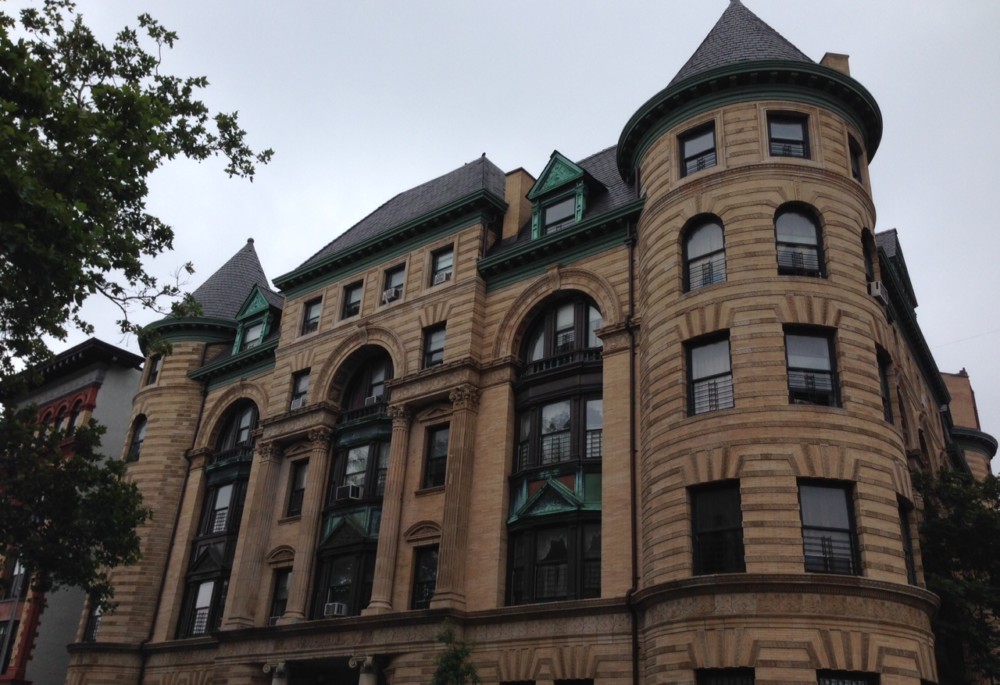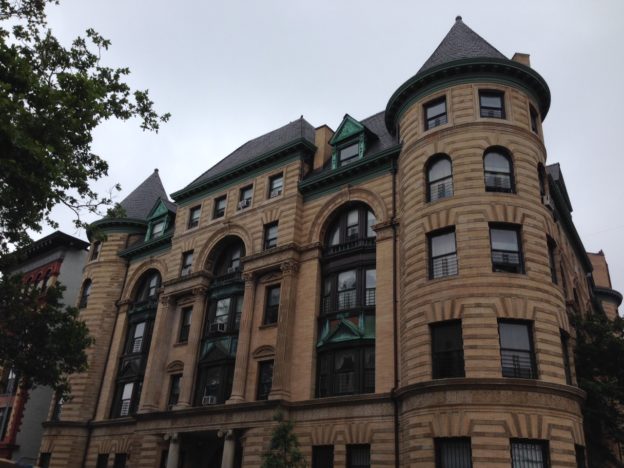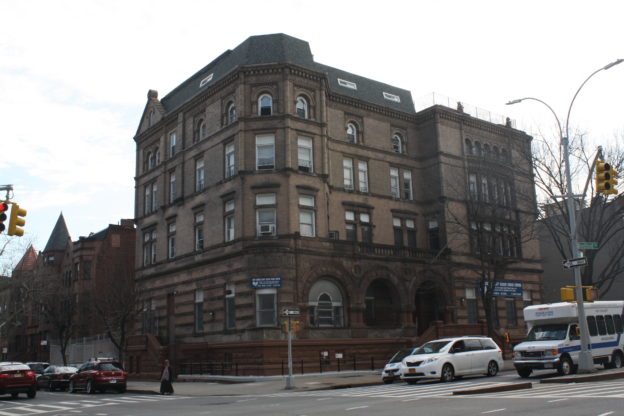1198 Pacific Street and 1327-1339 Bedford Avenue;
Montrose W. Morris, 1892;
1200 Pacific Street;
Montrose W. Morris, 1891 |
These two striking apartment buildings were designed by Montrose W. Morris, one of the most prominent Brooklyn architects of his day. The Imperial resembles a French château, with Renaissance Revival style details that include grand arches supported by fluted Corinthian columns and pilasters, conical turrets, and a slate mansard roof. Its window bays are faced in copper, whose green patina forms a nice contrast to the Bedforshire’s brownstone ornament, which has more recently been painted red. The Bedfordshire also features grand arches supported by pilasters, and its top story is graced with small arches and a projecting cornice. The Imperial was considered to be the finest apartment building in Brooklyn when it opened, and was even compared to The Dakota in Manhattan. It fell into disrepair in the late 20th century and was boarded up until a major renovation and restoration in 2006 that revived the building’s status as a showpiece for Crown Heights North and converted it into affordable housing.
The Imperial Apartments are a New York City Individual Landmark, located within the Crown Heights North Historic District and on the State and National Register of Historic Places.
The Bedfordshire Apartments are located within the Crown Heights North Historic District and on the State and National Register of Historic Places.
19 Grant Square;
Peter J. Lauritzen, 1890;
William Ordway Partridge, 1896|
This handsome Romanesque Revival style building was constructed as a social club for the Union League, established in 1863 by Union supporters and members of Brooklyn’s Republican Party. The Grant Square façade abounds in Union iconography, most significantly in the brownstone busts of Abraham Lincoln and Ulysses S. Grant above the entrance arches and a grand eagle supporting the second floor bay window. The building’s rich terra cotta trim includes a plethora of Byzantine leaf, popular in the 1880s and 1890s. The structure’s roofline suffered major alterations in the 1970s, including the removal of Spanish tiles, a turreted observation tower, and a gabled roof with a large dormer. In the early 20th century, after the boroughs were consolidated, the club merged with the Manhattan branch. In 1914, the building became home to a Jewish organization called the Unity Club until 1943, and was subsequently converted to a Yeshiva. The building currently houses the Bhraggs Grant Square Senior Citizens’ Center. The Union League Club commissioned the bronze statue of Grant that sits within the adjacent square, and donated it to the city in 1896, when it was unveiled on Grant’s birthday.
The Former Union League Club of Brooklyn and General Grant statue are located within the Crown Heights North Historic District and State and National Register of Historic Places Crown Heights North Historic District.


